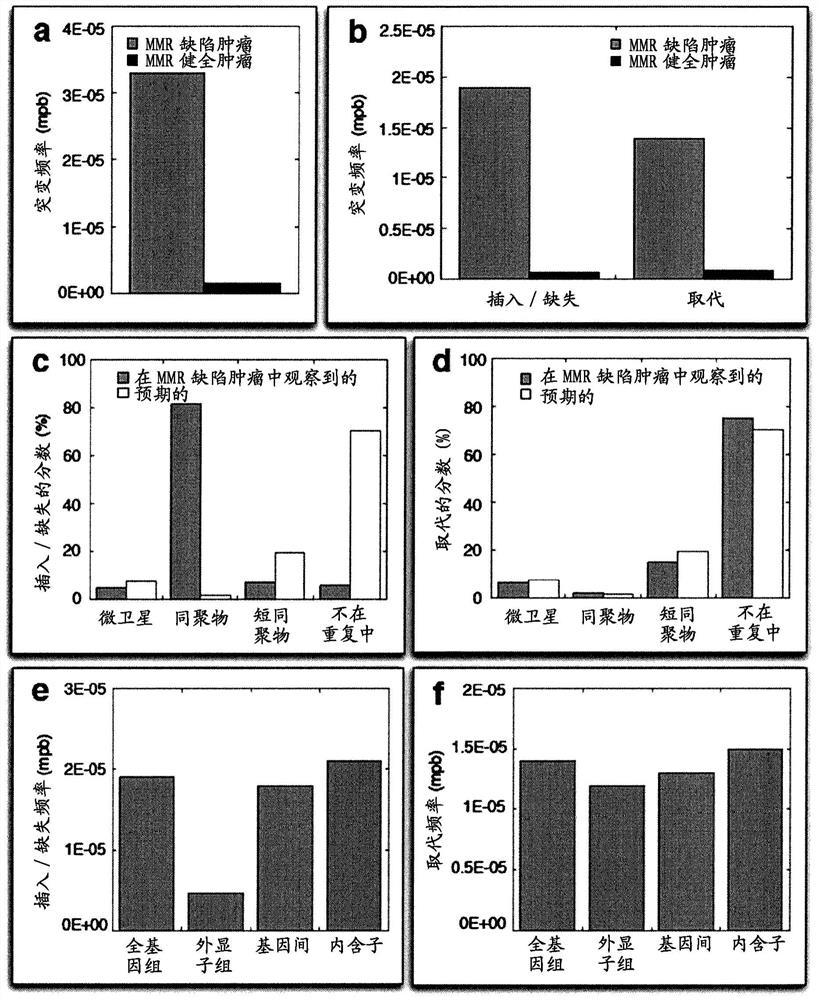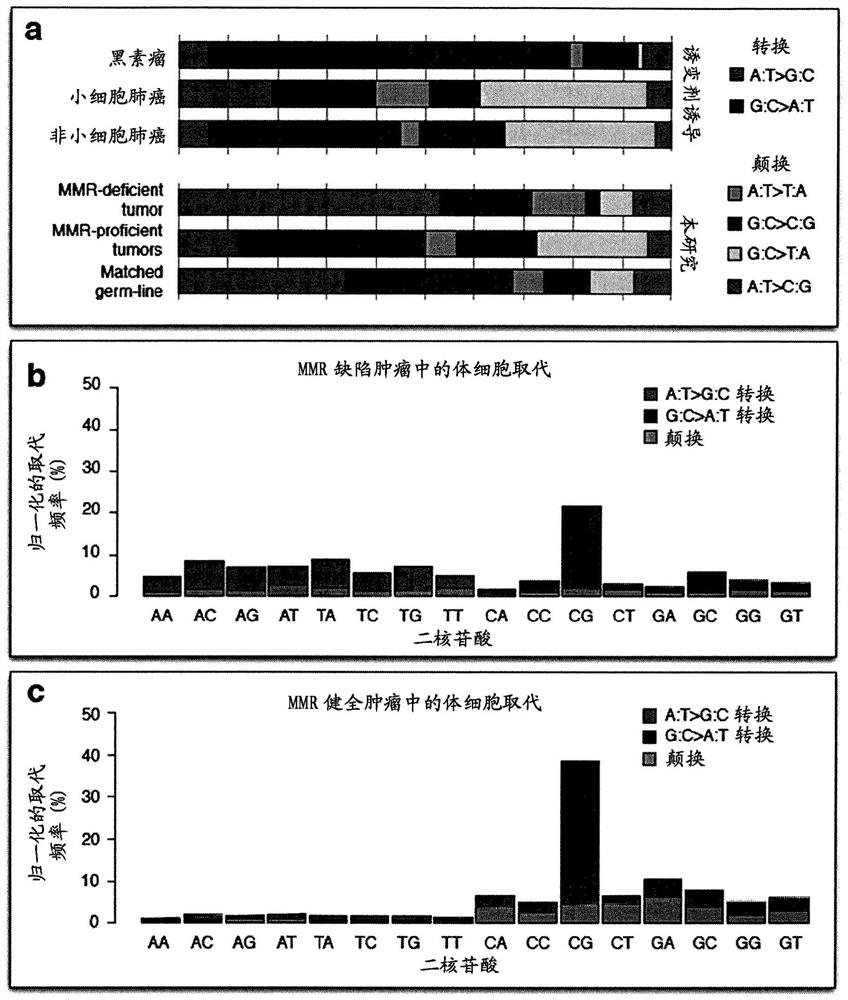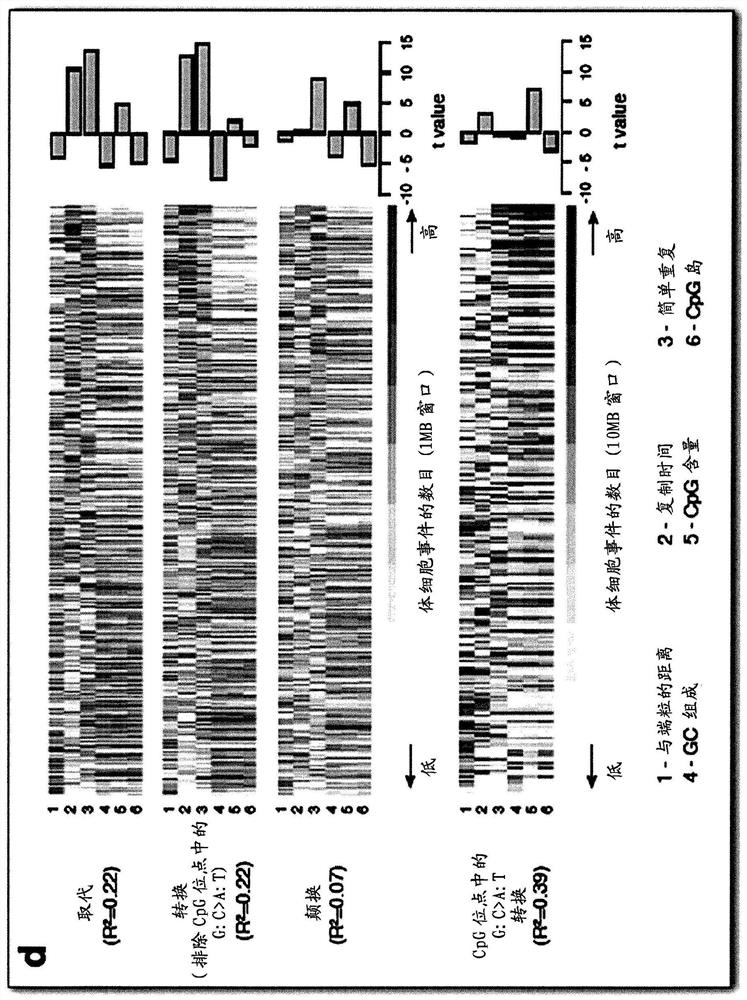Novel markers for detecting microsatellite instability in cancer and determining synthetic lethality with inhibition of the DNA base excision repair pathway
A microsatellite, purpose-built technology for mismatch repair-deficient tumors that can solve problems such as short reading
- Summary
- Abstract
- Description
- Claims
- Application Information
AI Technical Summary
Problems solved by technology
Method used
Image
Examples
Embodiment 1
[0342] Example 1. Whole-genome sequencing of MMR-deficient endometrial tumors
[0343] To select MMR-deficient tumors for whole-genome sequencing, standard diagnostic tests were used, including immunohistochemistry for MMR proteins (MLH1, MSH2, and MSH6), assessment of microsatellite instability (MSI) with the extended Bethesda panel (Pinol et al , 2005) and profiling of the methylation profile of the MLH1 promoter. The results of immunohistochemistry and MLH1 promoter hypermethylation are shown as the first 3 rows in Table 9. The series recommended by the international MSI evaluation guidelines (i.e., the revised Bethesda series (Boland et al., 1998; Dietmaier et al., 1997)) was used at 10 markers containing mononucleotide or dinucleotide repeats (2 and 8 markers, respectively). Microsatellite instability (MSI) status was analyzed at different loci. PCR amplification was performed in two pentaplexes: multiplex A (BAT25, BAT26, D5S346, D17S250, D2S123) and multiplex B (BAT40...
Embodiment 2
[0356] Example 2. Patterns of somatic mutations in MSH6-deficient hypervariants
[0357] Studies in model organisms and cell lines have revealed that somatic mutations arising due to MMR deficiency involve in most cases affecting microsatellite sequences (dinucleotides with a minimum length of 6 bases and at least two repeat units to Hexanucleotide repeats) and homopolymers (mononucleotide repeats with a minimum length of 6 bases) indels (insertions / deletions) (Ellegren, 2004). To test this hypothesis, we stratified the genome into four distinct categories with the following definitions:
[0358] - Microsatellite region: di-, tri-, tetra-, penta- or hexanucleotide repeats consisting of at least two repeat units and having a minimum length of 6 bases.
[0359] - Homopolymeric regions: mononucleotide repeats with a minimum length of 6 bases.
[0360] - Short homopolymeric regions: mononucleotide repeats of 3, 4 or 5 bases in length.
[0361] - Non-repeated region: every base ...
Embodiment 3
[0371] Example 3. Exome Sequencing of Mismatch Repair Deficient and Competent Tumors and Their Matched Normal Samples
[0372] We selected 10 additional MMR deficient EM and CRC tumors and 4 MMR competent tumors characterized by deficiency of MLH1, MSH2 or MSH6 (Table 9, Table 13). Therefore, a total of 14 tumor-normal pairs were collected for exome sequencing, including 11 endometrial tumors (EM) and their matched germline samples and 3 colorectal tumors (CRC) and their matched germline samples. Yes. All tumors were primary, chemotherapy-naïve tumors. Tumor DNA was derived from fresh-frozen tumor tissue, whereas matched germline DNA for these samples was extracted from peripheral blood leukocytes. Detailed clinical information for all these samples is listed in Table 13. In addition, 5 MMR-deficient primary endometrial tumor cell lines were included in the analysis, bringing a total of 16 MMR-deficient tumor samples.
[0373] Table 13. Clinical Information for Additional ...
PUM
 Login to View More
Login to View More Abstract
Description
Claims
Application Information
 Login to View More
Login to View More - R&D
- Intellectual Property
- Life Sciences
- Materials
- Tech Scout
- Unparalleled Data Quality
- Higher Quality Content
- 60% Fewer Hallucinations
Browse by: Latest US Patents, China's latest patents, Technical Efficacy Thesaurus, Application Domain, Technology Topic, Popular Technical Reports.
© 2025 PatSnap. All rights reserved.Legal|Privacy policy|Modern Slavery Act Transparency Statement|Sitemap|About US| Contact US: help@patsnap.com



